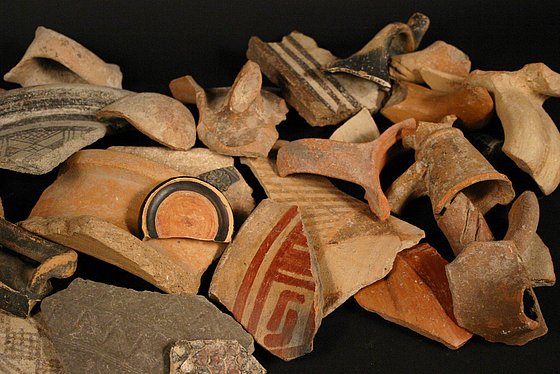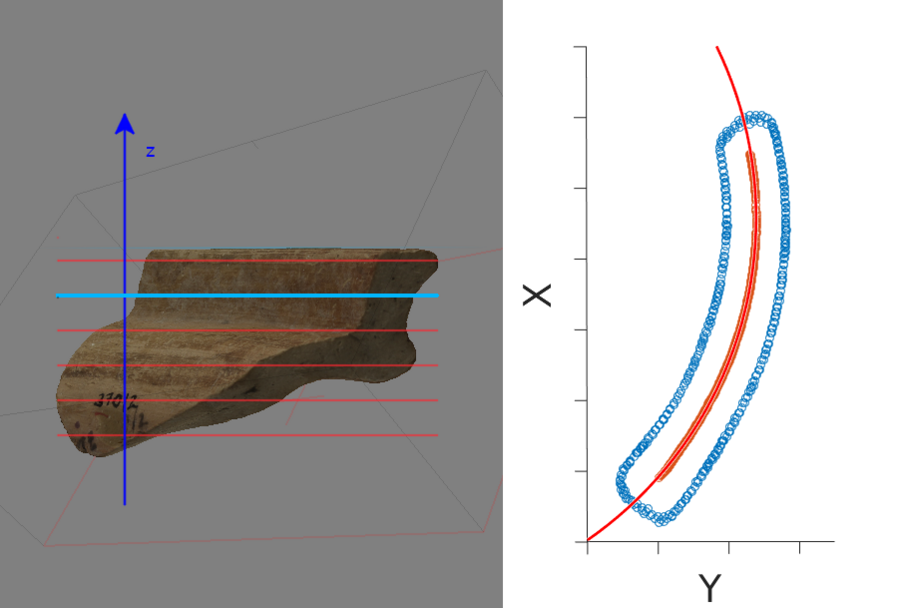Pose Estimation of Rotationally Symmetrical Objects
Introduction

A small selection of archaeological sherds. Source: BAI Wuppertal
Rotationally symmetric objects are ubiquitous. Therefore, the determination of the corresponding rotation axis plays an important role in many areas, e.g., to correctly understand or interpret a 3D scene or to enable safe grasping by robots.
Thousands of years ago, everyday life was also characterized by rotationally symmetrical objects. Plates, vases, cups, everyday wares and decorations were formed by hand on turntables and baked into ceramics. The products of such ancient manufacturing processes are of course not comparable in quality with today's ceramics. After thousands of years, often only sherds can be excavated. Thus, the analysis of these finds and especially the correct determination of the rotation axis of the original vessel is a special challenge in the context of archaeology.
In the process of archaeological processing, the commonly thousands and tens of thousands of sherds found after an excavation are analyzed and classified and, based on this, scientifically interpreted. The documentation is done in particular via two-dimensional drawings of the side profiles of sherds and the determination of the rotation axis is a necessary prerequisite for this.
Methods

Left: Parallel planes intersect the 3D model.
Right: Single plane intersection from top view. A circle can be reconstructed, which has the axis of rotation as center.
Archaeological pottery sherds feature specific regions (see interactive 3D model) and properties that can be used to determine the axis of rotation. For example, parallel plane sections can be used to determine the axis of rotation (see image). Overall, a number of known approaches exist, but a system that reconstructs the correct axis of rotation for each sherd shape fully automatically could not be developed so far.
Interactive 3D Model
A Cooperation Project

The archaeological institute in Jerusalem. Source: DEIAHL
The research is carried out in cooperation with the Biblical Archaeological Institute Wuppertal (BAI) and the German Protestant Institute of Archaeology in the Holy Land (GPIA) in Jerusalem and Amman, both directed by Prof. Dr. Dr. h.c. Vieweger.
For further information see the websites of the institutes BAI Wuppertal and GPIA.
